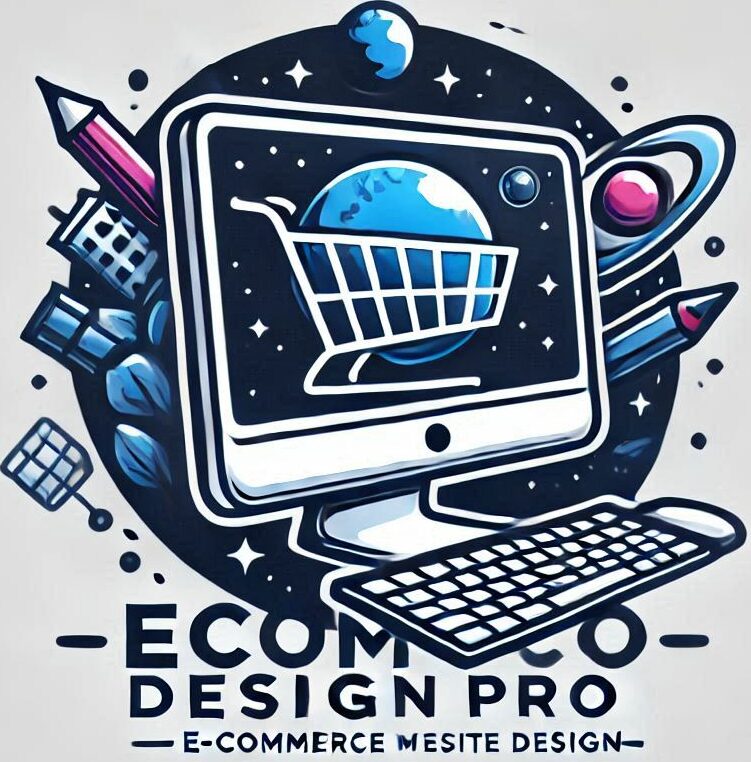In 2025, e-commerce success hinges on more than just what you sell, it’s about how your customers experience your store. With competition fiercer than ever and customer expectations rising, mastering e commerce ux design is now a non-negotiable factor for growth.
A seamless user experience directly influences conversion rates and builds long-term brand loyalty. This guide will empower you with the latest trends, actionable strategies, and expert insights to elevate your store’s user experience.
Ready to future-proof your business? Discover proven tactics you can implement today to delight, convert, and retain more customers in the rapidly evolving world of e-commerce.
Understanding E-Commerce UX: Principles and Evolving Trends
Creating a memorable e commerce ux design is about more than just aesthetics. It involves shaping every stage of the customer journey, from their initial visit to long after their purchase. Modern shoppers expect seamless, intuitive experiences, and 70% of online businesses say UX is critical for conversions, according to Shopify. The impact of user experience can be seen in key metrics like bounce rates, cart abandonment, and customer retention. For example, Amazon’s focus on easy navigation and functional design consistently drives high conversion rates.

What is E-Commerce UX and Why It Matters
E commerce ux design goes beyond just visual appeal. It covers how usable and accessible your store is, as well as the emotional impact it creates. Every touchpoint, from browsing products to post-purchase support, shapes the customer’s perception of your brand. A well-executed UX guides shoppers smoothly through the buying process, reducing friction and encouraging repeat visits. Key performance indicators like bounce rate and cart abandonment are directly influenced by UX choices. Take Amazon as an example: their user-centric design, clear structure, and fast performance make shopping effortless and drive higher conversions.
Core Principles of Effective E-Commerce UX
To master e commerce ux design, focus on a few foundational principles:
- Simplicity and clarity in navigation and content
- Consistent design elements and interactions
- Speed and performance optimization
- Accessibility for all users
- Emotional resonance that builds trust
These principles ensure users can find what they need quickly and feel confident in their journey. For a deeper dive into these essentials, review the E-commerce design best practices that set successful online stores apart. By upholding these standards, you create a welcoming and efficient environment that keeps customers coming back.
Evolving Trends in 2025
The landscape of e commerce ux design is rapidly evolving. In 2025, expect to see AI-driven personalization that tailors content and recommendations to each user. Omnichannel experiences allow seamless transitions between devices and platforms. Voice commerce and conversational interfaces are gaining traction, making it easier for users to shop hands-free. Sustainability and ethical design are also top priorities, with more brands adopting green practices. Notably, 60% of consumers now expect personalized shopping experiences, signaling the growing importance of adaptive UX strategies.
Common UX Pitfalls in E-Commerce
Even with the best intentions, it is easy to fall into common e commerce ux design traps. Overcomplicated layouts, flashy features, and slow loading times can frustrate users and drive them away. Sites that are not mobile-friendly or lack accessibility lose valuable customers. Inconsistent branding and confusing calls-to-action often result in missed opportunities. A prime example is the link between poor checkout design and high cart abandonment rates. Simplifying and streamlining these areas can make a measurable difference in conversion.
The Business Impact of UX Investment
Investing in e commerce ux design yields significant business benefits. Case studies reveal that brands can boost revenue by up to 30% after improving their UX. In crowded markets, superior UX becomes a key differentiator, helping businesses stand out. Enhanced user experience also reduces customer support needs, saving costs. Higher customer satisfaction and retention rates further drive long-term growth. Remember, UX is not a one-time project but an ongoing, iterative process that adapts to changing customer expectations and technologies.
Step-by-Step Guide to Designing a High-Converting E-Commerce UX in 2025
Mastering e commerce ux design in 2025 requires a structured, data-driven approach. By following these seven steps, you can create a user experience that not only delights customers but also drives conversions and brand loyalty. Each step below is actionable, supported by industry data, and rooted in real-world success stories.

Step 1: Research & Map the User Journey
Begin your e commerce ux design process by deeply understanding your audience. Conduct user research using surveys, interviews, and heatmaps to uncover motivations and behaviors. Develop user personas to represent key segments, ensuring that each design decision is user-centric.
Mapping the customer journey is crucial. Identify every touchpoint, from initial discovery to post-purchase engagement. For example, Bull and Cleaver discovered their most visited pages were not the homepage but specific product and story pages. Use journey mapping tools to visualize pain points and opportunities for improvement.
Remember, a well-researched e commerce ux design directly impacts metrics like conversion rates and retention. For more on the business case, see The role of UX in boosting e-commerce sales.
Step 2: Optimize Navigation and Information Architecture
A successful e commerce ux design relies on intuitive navigation. Structure menus and categories logically, so users find products quickly. Prominent search functionality with predictive results streamlines product discovery.
Ensure rapid access to key pages like the cart, account, and help center. Allbirds offers a great example, using a simple homepage navigation that guides users effortlessly. Avoid cryptic icons or hidden menus, which confuse shoppers.
Use clear labels and logical grouping to reduce cognitive load. An optimized navigation system increases satisfaction and keeps users engaged throughout their journey.
Step 3: Prioritize Speed, Performance, and Mobile Experience
Site speed is non-negotiable in e commerce ux design. Optimize images, scripts, and hosting infrastructure to ensure fast loading. Responsive design is essential for seamless experiences on mobile and tablet devices.
Statistics show that 53 percent of mobile users leave sites taking more than three seconds to load. Test your store across browsers and devices for consistency. Amazon’s relentless focus on speed and performance sets the industry standard.
A fast, mobile-friendly e commerce ux design not only reduces bounce rates but also maximizes conversion opportunities.
Step 4: Craft User-Centered Content and Visuals
Content is a core pillar of e commerce ux design. Write product descriptions that clearly communicate benefits, not just features. Use high-resolution, zoomable product images to build trust and help customers make informed decisions.
Microcopy, such as tooltips and error messages, guides users and reduces friction. Place essential information above the fold, so visitors immediately see what matters most. Ruffwear’s targeted landing pages demonstrate how aligning content to user intent increases engagement.
Well-crafted content and visuals make your brand memorable and drive repeat visits.
Step 5: Build Trust and Reduce Friction in Checkout
Streamline your checkout process to support a high-converting e commerce ux design. Use minimal form fields, enable guest checkout, and offer diverse payment options like digital wallets and Buy Now Pay Later.
Display security badges and transparent policies for reassurance. Visual progress indicators and clear calls-to-action reduce confusion. Studies reveal that optimized checkouts can lower cart abandonment rates by up to 35 percent.
Trustworthy and efficient checkout flows turn browsers into loyal customers.
Step 6: Leverage Personalization and AI for Engagement
Personalization is reshaping e commerce ux design. Implement dynamic product recommendations based on browsing and purchase history. AI-powered chatbots provide instant support, answering questions and guiding users in real time.
Deliver personalized content, offers, and email follow-ups to boost engagement. Netflix-style recommendation engines are increasingly adopted by forward-thinking retailers. Data shows that personalized experiences can increase sales by 10 to 15 percent.
Harnessing AI ensures your e commerce ux design feels relevant and engaging for every visitor.
Step 7: Test, Measure, and Iterate Continuously
Continuous improvement is the hallmark of effective e commerce ux design. Run A/B tests on layouts, messaging, and features to determine what resonates with users. Analyze customer behavior through analytics and feedback loops.
Implement changes based on data, not assumptions. Usability testing with real customers uncovers hidden issues and opportunities. Foster a culture where ongoing optimization is the norm, not the exception.
Iterative e commerce ux design keeps your store competitive as customer expectations evolve.
Accessibility, Inclusivity, and Global UX Standards
In the dynamic world of e commerce ux design, accessibility and inclusivity are no longer optional—they are fundamental requirements for success. As digital shopping expands globally, brands must ensure their online stores welcome every customer, regardless of ability or location.

Why Accessibility is Non-Negotiable in 2025
Accessibility is a legal, ethical, and business imperative in e commerce ux design. Regulations like ADA and WCAG 2.2 set clear standards for digital inclusion. With 15% of the global population living with disabilities, inaccessible sites risk excluding millions of potential customers.
Accessible design also builds brand trust and loyalty. Research shows accessible e-commerce stores outperform competitors in customer retention. For actionable steps to comply and excel, explore these guidelines for ensuring e-commerce accessibility. Prioritizing accessibility in e commerce ux design is an investment in both compliance and growth.
Key Elements of Inclusive E-Commerce Design
Inclusive e commerce ux design centers on removing barriers for all users. This includes:
- Strong color contrast and easily readable fonts
- Scalable text for different vision needs
- Keyboard-friendly navigation and full screen reader support
- Alt text for every product image and descriptive links
- Minimizing animations or motion that may cause discomfort
Ignoring these basics can lead to legal action and fines, as seen with retailers penalized for inaccessible websites. Embracing these practices ensures your e commerce ux design serves everyone equally.
Designing for a Global Audience
To thrive internationally, e commerce ux design must adapt to diverse cultures and preferences. Multi-language and multi-currency support are now standard. Localizing imagery, colors, and messaging helps avoid cultural missteps and builds trust.
Offer region-specific payment and shipping options to remove friction. For example, brands that tailor their e commerce ux design for each market see higher conversion rates. In fact, 72% of users prefer shopping in their native language, underscoring the need for thoughtful localization.
Monitoring and Maintaining Accessibility
Accessibility in e commerce ux design is not a one-time task. Conduct regular audits using automated tools and manual testing with diverse users. Stay updated as standards evolve and implement ongoing improvements.
Resources and communities can help your team maintain compliance and best practices. An inclusive approach not only expands your reach but also reduces legal risks and enhances your brand’s reputation. Continuously evolving your e commerce ux design ensures lasting accessibility for all.
Integrating AI, Automation, and Emerging Tech in E-Commerce UX
The future of e commerce ux design is defined by rapid advances in AI, automation, and emerging technologies. These innovations are reshaping how users interact with online stores, creating more personalized, efficient, and engaging digital shopping experiences.

The Rise of AI-Driven Personalization
AI is transforming e commerce ux design by enabling stores to anticipate and meet user needs in real time. Through machine learning algorithms, retailers can deliver dynamic product recommendations, personalized content, and predictive search results tailored to each visitor.
Chatbots and virtual assistants now guide shoppers, offering instant support and reducing friction at every step. According to Shopify, 80% of shoppers are more likely to buy from brands that offer personalized experiences. AI-powered upselling at checkout drives higher order values and boosts customer satisfaction.
To explore this further, see how AI-powered personalization in e-commerce is driving measurable results for online retailers.
Automation for Seamless User Experiences
Automation is crucial for creating smooth, efficient journeys in e commerce ux design. Automated inventory updates keep product availability accurate, while personalized notifications remind customers of sales or restocks.
Smart retargeting and email automation ensure shoppers receive timely, relevant offers. Automated FAQ bots handle common queries, freeing support teams to focus on complex issues. These advancements not only streamline user flows but also improve operational efficiency for e-commerce businesses.
As automation continues to evolve, expect faster response times and a more cohesive shopping experience for every customer.
Voice, AR, and Next-Gen Interfaces
Emerging interfaces are revolutionizing e commerce ux design. Voice commerce allows users to search for products and place orders with simple commands, making shopping more accessible and hands-free.
Augmented reality lets customers visualize products in their own space, from virtual try-ons to 3D product views. This reduces uncertainty and lowers return rates. Conversational commerce through messaging platforms enables brands to engage with shoppers in real time.
Forward-thinking brands are preparing for "phygital" experiences, blending physical and digital elements to create seamless online and offline journeys.
Data Privacy, Ethics, and Trust in AI
As e commerce ux design becomes more data-driven, privacy and ethics are paramount. Transparent data collection and clear consent practices build trust with customers.
Brands must balance personalization with privacy, ensuring compliance with regulations like GDPR and CCPA. Ethical AI use means avoiding bias and ensuring fairness in automated decisions.
Key practices for trust:
- Explain how data is used
- Offer easy opt-out options
- Regularly audit AI systems for bias
By adopting responsible tech, brands can foster loyalty and safeguard their reputation as they innovate.
Actionable UX Strategies for E-Commerce Growth
Unlocking sustainable growth in e commerce ux design requires a clear focus on what truly matters for your users. Below are proven, actionable strategies you can implement to boost conversions and deliver memorable experiences in 2025.
Prioritize Function Over Flash
In e commerce ux design, usability must always come before visual flair. Fast load times and intuitive layouts outperform heavy animations or cluttered visuals. Minimalist design not only enhances performance but also speeds up decision making for shoppers.
- Choose clean layouts with clear calls to action.
- Optimize images and scripts for quick loading.
- Avoid distracting pop ups or auto playing media.
Successful brands often see higher conversions by focusing on function over trendy features. For more on emerging best practices, review the E-commerce UX Trends 2025 guide for additional insights.
Build Sales Funnels, Not Just Web Pages
A winning e commerce ux design creates a seamless journey from first touchpoint to completed purchase. Map your customer’s path, designing targeted landing pages for each audience segment.
- Guide users with logical steps and clear CTAs.
- Use personalized product pages for different campaigns.
- Minimize distractions to keep users moving forward.
Think of your store as a well constructed funnel, not just a collection of pages. Remove friction at every stage to improve flow and boost conversion rates.
Capture Attention and Intention with Smart Marketing
Effective e commerce ux design is closely tied to how you capture and direct user attention. Tailor experiences to match the visitor’s intent, whether they arrive from ads, organic search, or email.
- Segment audiences for relevant messaging.
- Align landing page content with ad promises.
- Use strong visual hierarchy and persuasive copy.
This approach ensures visitors feel understood and see value immediately, increasing the likelihood of engagement and purchase.
Write Copy that Converts and Connects
Words are a powerful element in e commerce ux design. Clear, benefit driven copy builds trust and encourages action. Avoid jargon and focus on what matters to your customers.
- Use microcopy for reassurance (e.g., “Free returns”).
- Maintain a consistent brand voice across all pages.
- A/B test headlines and CTAs for impact.
Well crafted copy guides users smoothly through the journey, reducing hesitation and driving conversions.
Make Navigation and Checkout Intuitive
Navigation and checkout are the backbone of e commerce ux design. Menus should be logical, with visible search and easy access to the cart. Streamline checkout to minimize steps and errors.
- Use progress bars to set expectations.
- Validate forms in real time to prevent frustration.
- Prioritize mobile first navigation for a seamless experience.
For a deeper dive into optimizing for mobile, explore Mobile-First E-commerce Design and ensure your design excels across all devices.
Future-Proofing Your E-Commerce UX: Sustainability and Adaptability
Adapting your e commerce ux design for the future means building systems that are resilient, scalable, and mindful of both user needs and global challenges. As technology and consumer expectations shift rapidly, keeping your online store agile is essential for sustainable growth and long-term relevance.
Designing for Flexibility and Scalability
Flexibility in e commerce ux design allows your store to adapt quickly to market changes, trends, and user demands. Implementing modular design systems makes updates faster and more efficient, while scalable infrastructure ensures your site handles traffic spikes without hiccups.
Consider these best practices:
- Use headless commerce and progressive web apps for future-ready architecture
- Adopt reusable UI components for easy customization
- Monitor performance and scale resources as needed
Recent data shows that 50% of e-commerce leaders are prioritizing scalability in 2025. Brands that invest in adaptable systems consistently outperform competitors during high-demand periods.
Embracing Sustainable and Ethical UX Practices
Sustainability is now a key differentiator in e commerce ux design. Consumers increasingly value brands that prioritize ethical choices, from eco-friendly hosting to transparent messaging about sourcing and logistics.
Key strategies include:
- Choosing green hosting providers and optimizing code for minimal energy use
- Displaying clear, honest information on supply chain ethics
- Reducing digital waste by streamlining media and features
Brands that champion sustainability not only build loyalty but also meet rising consumer expectations for responsible business. Ethical design is no longer optional; it is integral to future-proofing your user experience.
Continuous Learning and Staying Ahead of Trends
The digital landscape evolves rapidly, making ongoing education vital for effective e commerce ux design. Following UX thought leaders, attending industry events, and upskilling your team ensures your store remains competitive.
Emerging technologies like augmented reality are reshaping online shopping, allowing users to visualize products before purchase. For a deeper look at these innovations, the article on Augmented Reality in Online Shopping highlights how AR can reduce returns and boost engagement.
Invest in regular training and stay informed to capitalize on new trends before they become mainstream.
Leveraging Expert Guidance and Community Support
No e commerce ux design thrives in isolation. Collaborating with UX consultants and participating in professional forums can spark innovation and reveal best practices you might overlook internally.
Ways to maximize community value:
- Benchmark against industry leaders to identify gaps
- Share and review case studies to inspire new solutions
- Engage in peer feedback sessions for continuous improvement
Community-driven enhancements often lead to breakthrough ideas and foster a culture of learning. Tapping into expert knowledge and shared experiences will help ensure your UX remains adaptable and resilient in a fast-changing environment.



